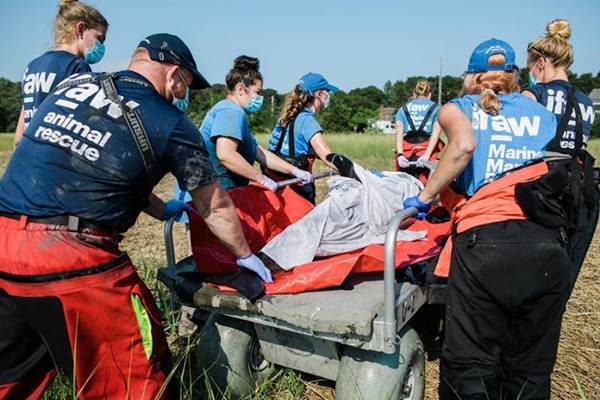Be a Responsible Tourist - Volunteering

In recent years, solidarity tourism and voluntourism have reached a high level of popularity. Generally, trips of this type include some kind of volunteer experience with an NGO or a project linked to the destination.
As part of these solidarity experiences, it’s possible to find from social volunteering, such as working in orphanages and schools, to volunteering with animals, for example in rescue centers and sanctuaries. In either case, the very concept of travel involves supporting social activities with the aim of leaving, on one way or another, a positive impact at the destination. But sometimes, due to lack of information, people end up participating in voluntary works that have a negative impact.
When animals are the victims, this type of voluntary work usually takes place in so-called “fake sanctuaries o rescue centers”, mainly run by unserious o inexperienced organizations o, directly by private companies.
In order to help distinguish and recognize a volunteering that could be more harmful to fauna, here comes a series of recommendations to always keep in mind:
- The first question to ask yourself when considering volunteering with animals should be: Why do I want to do it? To really help the animals involved or to have a close experienced with them? If the latter is the case, the very idea of volunteering loses its main essence, which is to collaborate in a totally altruistic way without getting anything in return. If, on the other hand, the purpose is to help the animals, even if it means not having direct contact with them, agreeing to do unpleasant work such as cleaning up their facilities and feces, or doing other types of work (whether it´s building facilities, fixing utensils, cooking for the team, etc...), then the basis for such a trip does exist.
- It is essential to choose a serious NGO and a real project with a clear goal. If you want to volunteer in a sanctuary, it is important to take into account these tips to recognize a fake rescue center.
- When contacting the organization in question, a sign of seriousness of their part is to request the CV and experience of the potential volunteer. This is because a serious center will need to know the skills and abilities, however simple they may be, of the person in question in order to be able to assign them tasks in which they can really help.
- It is also important that the organization request an interview to get to know the potential volunteer and their level of commitment. Or, at least, they should talk to the person by email and have them sign a volunteer contract stating the tasks and schedule to be completed. You are going to help, not on vacation.
- It is also important that they DO NOT require an exorbitant amount of money. In the case of a real voluntary work, it makes sense that the person will have to pay for the travel and at most, for the accommodation and meals. What should raise the alarm would be having to pay for “the experience”, since the aim is to work. In other words, asking for a lot of money can be a sign that the company or organization is making a profit at the expense of the tourists who volunteer, becoming a business and not something truly supportive.
- The people working in the center or project should also be local people. This is because sustainable tourism cannot only be sustainable with animals, but must also be socially and environmentally responsible. This involves participating in projects that help the local economy and population.
- Before the trip or the first day of volunteering, the center should offer a small training not only on their work in general, but also to provide good guidelines about the specific work that will have to be done and how to do it in the best way.
- Voluntary work only makes sense if it is for a long enough period of time so that the volunteer can really contribute something. This is because, when a person arrives in a place, they first need to settle in, adapt and learn what they have to do. That is to say, they have to be trained and get involved in order to be able to really help. There is no need to waste time training volunteers who will leave as soon as they have really learned how to do the job. Therefore, the voluntary work should last AT LEAST one month, ideally three months or even longer. Those who want to help but only have a few days or weeks available, can always visit the place during their holidays (when this is allowed) and/or make a small financial contribution.
- Most real voluntary works with animals does not allow direct contact with them unless you are a veterinarian and will be helping. For reasons of well-being, safety and risk of disease transmissions, direct contact with wild animals should be minimal or non-existent. Therefore, seeing photos of volunteers hugging or taking selfies with animals at a particular center should raise the alarm. On the other hand, sanctuaries or projects that make it clear from the outset that this type of contact will be very restricted or non-existent can be considered a good option. If they also ask for vaccinations, medical tests (such as for tuberculosis, a disease that is easily transmitted from humans to animals) and pass health protocols, they are indicating that the well-being and health of their animals is paramount and it is something they take very seriously.
